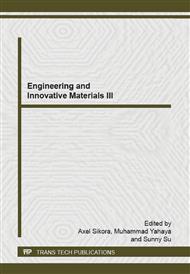p.214
p.219
p.224
p.229
p.237
p.242
p.247
p.252
p.258
Automatic Alarm of Tobacco Blending Accuracy Based on PLC Control System
Abstract:
The tobacco blending is a special process in the tobacco product line. It plays a very important role in this area because it will affect the quality of the tobacco. The instant blending accuracy of the technological requirement is higher than 85%. This paper introduces an automatic alarm of tobacco blending accuracy based on PLC control system. The automatic alarming system is available and we can greatly improve the producing and automatic level. This is worth extending in the tobacco industry.
Info:
Periodical:
Pages:
237-241
Citation:
Online since:
October 2014
Authors:
Keywords:
Price:
Сopyright:
© 2014 Trans Tech Publications Ltd. All Rights Reserved
Share:
Citation:


